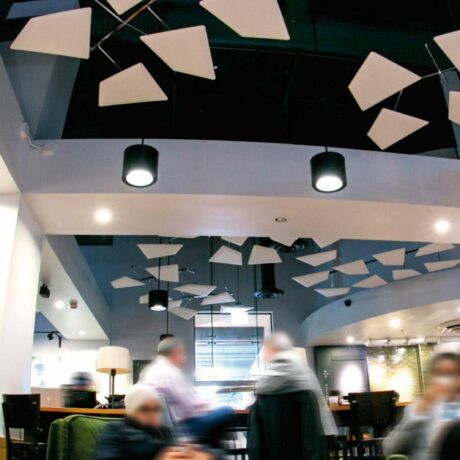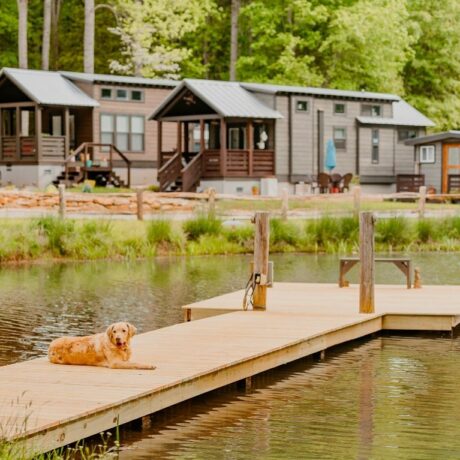Doha is the capital and most populous city of the State of Qatar. It has a population of 1,850,000 in the city proper and close to 2.4 million when you include the surrounding areas. It is Qatar’s fastest growing city (with over 80% of the nation’s population in the city and its suburbs. (The name “Doha” originated from the Arabic term dohat, meaning “roundness” — a reference to the rounded bays surrounding the area’s coastline.)


Doha was founded in the 1820s and was officially declared the country’s capital in 1971 when Qatar gained independence from being a British protectorate. As the commercial capital of Qatar and one of the emergent financial centers in the Middle East, Doha is considered a world city by the Globalization and World Cities Research Network.
Qatar is home to an eclectic mix of architecture with building designs ranging from traditional to modern. Doha, the capital city, is filled with amazing architectural feats including some of what you see here:

1 The Pearl-Qatar is an artificial island spanning nearly one thousand acres. It is the first land in Qatar to be available for freehold ownership by foreign nationals.. It was developed by United Development Company and planned by architecture and design firm Callison.
The name “The Pearl” was chosen because the island is built on one of Qatar’s previous major pearl diving sites. (Qatar was one of the major pearl traders of Asia before the Japanese introduced cheaper more affordable pearls just before Qatar’s oil boom.
2 Opened in March of this year, the 570,000 square foot National Museum of Qatar immortalizes the desert roses that have long bloomed under the hot Qatari sun. With its curved disks and cantilevered angles, the museum blooms amid the Doha landscape, a symbol of the humble beginnings and spectacular rise of a nation whose story is revealed within the institution’s 11 galleries. The stunning 53,000-square-meter building also reflects the emirate’s aspiration to become a major cultural power.


3 It was deemed as extremely important that the Qatar Courthouse should be aspirational and embody the ideals and value system of the country’s growing society. Order was seen as one of the core principles.The building is designed on two basic site-driven grids, one linking it to its immediate context and the second to the larger context of Doha. These grids create stunning structural and spatial possibilities that make the building stand out visually. The idea is that people will see their ideals (structure, order, transparency and ambition) reflected in built form.
4 Souq Waqif (“the standing market”) is a marketplace noted for selling traditional garments, spices, handicrafts, and souvenirs. It is also home to dozens of restaurants and Shisha lounges. Although it dates back at least a hundred years, it was renovated in 2006 to conserve its traditional Qatari architectural style. It is often perceived to be the only lasting area in Doha that retains an authentic feel notably in reference to its commerce, architecture and culture.


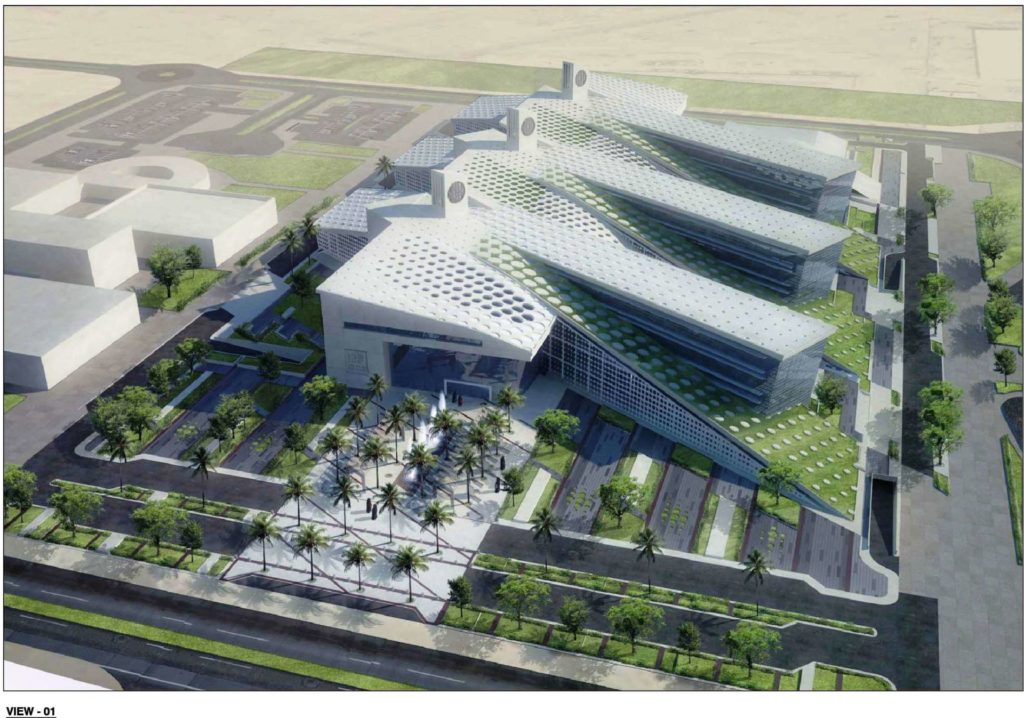
5 and 6 In1973, with UNESCO’s participation, a preliminary study was launched, aimed at creating higher education facilities for the State of Qatar. As a result, the first phase of the project comprising the academic buildings was inaugurated in February 1985 and now, Qatar University has a student population of over 5000. The Egyptian architect Kamal el Kafrawi is responsible for the overall design and planning whilst Ove Arup Partners were appointed as prime consultants to undertake structural and engineering services design and site supervision.
7 Burj Doha, also known as Doha Tower is an iconic high rise tower which, in 2012,received the CTBUH Skyscraper Award for the Best Tall Building Worldwide from the CTBUH. (See companion article on page 40.) The $125-million office building, designed by French architect Jean Nouvel, 761 ft) tall and has 46 stories.
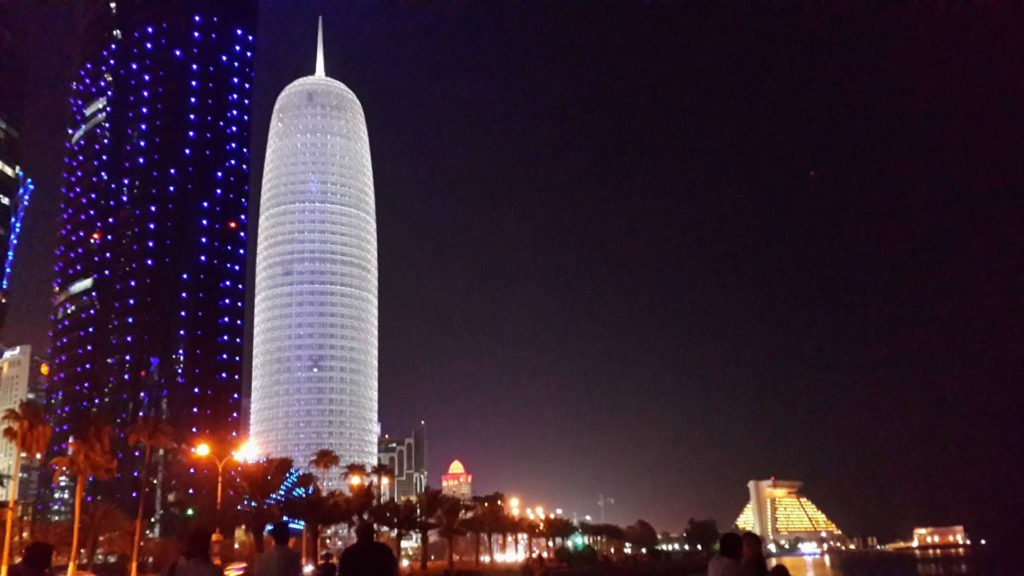

8 The Museum of Islamic Art is a designed by I.M. Pei. (See companion article on page 17.) It is built on an island off an artificial projecting peninsula near the traditional dhow harbor. A purpose-built park surrounds the edifice on the eastern and southern facades while two bridges connect the southern front facade of the property with the main peninsula that holds the park. The western and northern facades are marked by the harbor showcasing Qatari’s seafaring past.
9 Al-Fanar Islamic Cultural Center is one of the most widely known architectural landmarks in Doha. It is a wedding-cake shaped building where non-Muslim visitors are offered extended as well as crash-courses on the Islamic faith. It offers a variety of educational, yet unforgettable, activities, such as exhibitions, tours of the cultural center, visits to the mosque, Arabic language courses and the unique opportunity to attend the khutbah (Friday sermon) in English. The center is happy to meet the visitor before the prayer to explain mosque etiquette, the dos and don’ts.


10 Completed in 2008, the Tornado Tower, also called the QIPCO Tower, is a 640 feet office skyscraper with 52 floors. It is located on a 199,000 square foot plot of land, but only occupies 32,300 square feet of it, leaving plenty of open space around it to enhance its aesthetic. Due to the hourglass shape of the building, the total rentable office space available on each floor varies from 13,560–25,800 square feet. The top three floors of the tower are luxury office space and are surrounded by terraces and balconies, and the top level of the VIP floors has direct access to a helicopter landing pad.
11 Al Hitmi Office Building is a showcase of architectural innovation; it looks like a spectacular piece of art in the heart of the city. The design is inspired by the imagery of stone formations cantilevered over a body of water, which metaphorically links the site to the Arabian Gulf. The building is designed with a huge glass atrium, the biggest man-made lake and water features in Doha, refreshing landscapes and a roof garden.
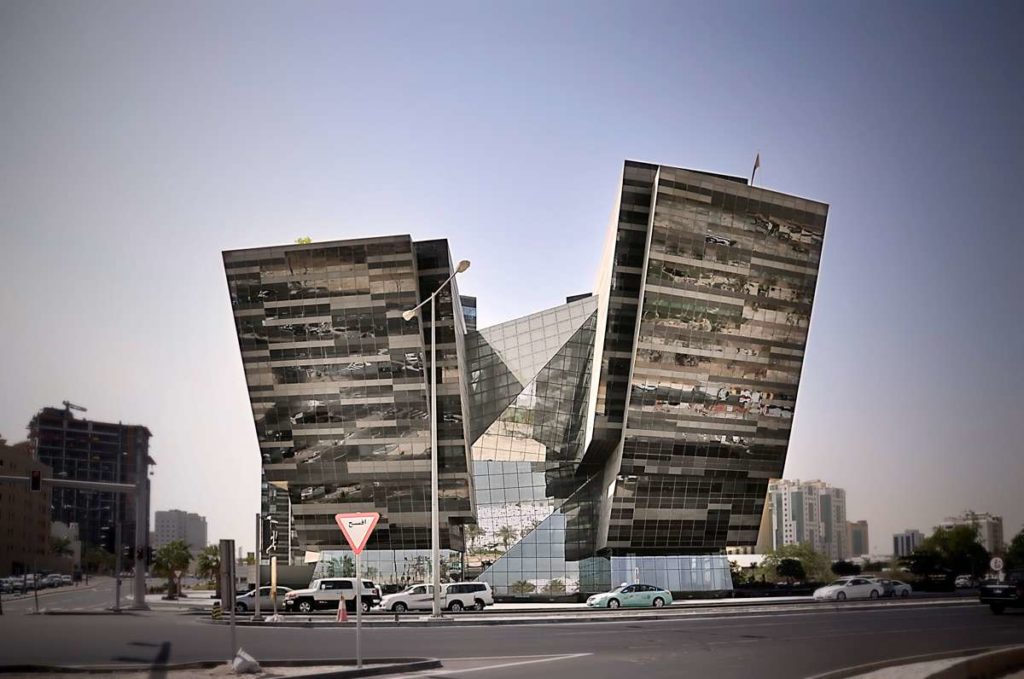

12 Doha Oasis is a mixed-use development project of approximately 1000 acres composed of an elliptically shaped high end residential buildings compound sitting on a four-story commercial/retail podium, an indoor theme park, a standalone hotel tower operated by La Cigale, and 4 basement levels of parking and support facilities.



